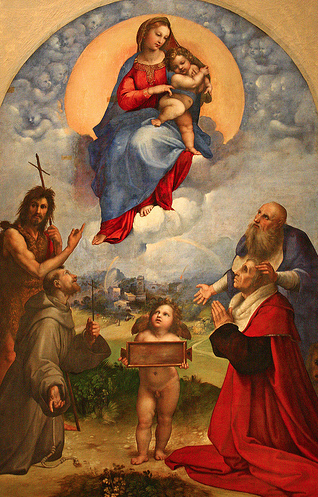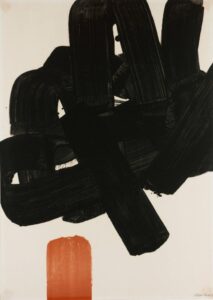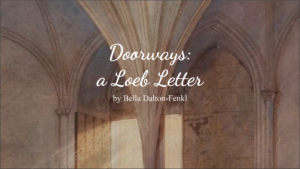Along with Vassar College, the Art Center is celebrating the sesquicentennial anniversary of our founding. In this weekly feature, we will look back on the rich 150-year history of the collection. Today’s post comes from Claudia Sanchez, Vassar College class of 2011 and Art Center student docent.

Although Matthew Vassar and Elias Magoon get much of the credit for what they did to found the Vassar Art Gallery, there is one individual who impacted the future of the museum for what she was chosen not to do.
In 1862, Milo P. Jewett met Emma Church, an American painter living in Rome, when making his tour of European schools, and was immediately taken by the artist’s talent. In his first letter to Emma Church, Matthew Vassar told her about Jewett’s praise for her “genius, personal, spotless and purity of character.” In addition, another Trustee, M.B. Anderson, had seen her work in Rome and affirmed that her reproductions “[were] done with the most conscientious fidelity to the original and with the most complete success.” As a result, Jewett commissioned four paintings for the Vassar Art Collection.
Emma Church, a strong character who was “[determined] to succeed as an independent woman,” was thrilled to know that her paintings would be used for the artistic education of young women in her home country. Church shared her excitement with her friends in Rome, who also supported “the “cause” of women’s education.” It has even been said that at some point Church was offered a position as a professor at Vassar, which she seems to have declined.
The College’s relations with Emma Church became tense when the payment for her first three paintings was delayed. Ms. Church was not to be trifled with and demanded that the payment be made promptly. One can assume that this incident was due to Church’s over-pricing of her paintings, valuing the first three at $2,419.35. However, on the ‘Vassar’ side of the story, we know that the Reverend Elias Lyman Magoon caused distress amongst the Trustees regarding the purchase of Ms. Church’s paintings.
Upon learning that Matthew Vassar was negotiating the purchase of Church’s works, Elias Magoon was completely outraged, and threatened to resign his post in the Board of Trustees. In a letter to Emma Church on December 15th, 1863, Matthew Vassar simply explained, “in as much as the Chairman of that Committee [Magoon] had not been advised or consulted, a little feeling of jealousy was created.” Vassar, however, chose not to mention Magoon’s issuing of a document to the Board of Trustees explaining his thoughts on “Art, on Original Art, and upon American Originality in Art.” In Magoon’s statement, no less than twelve pages, he wrote that he considered reproductions to be woefully unacceptable, and that art should be taught from original works.
In an attempt to maintain all diplomacy, Vassar said to Church that he would purchase the final painting personally and donate it to the school. He ended his December 15th letter by reiterating his respect for “an artist who [he] believe[d] will do the highest Credit to the profession of our Country’s women abroad.”
Her paintings are part of the permanent collection, yet they are too worn for display. They are reproductions of Carlo Dolci’s Madonna and Child, Guercino’s The Incredulity of St. Thomas and Raphael’s The Madonna of Foligno.
As much controversy as she caused within the Board of Trustees, not only was Emma Church the trigger of a dispute that resulted in the acquisition of the Magoon Collection, but it also seems that her character made her a perfect fit as a Vassar girl.




